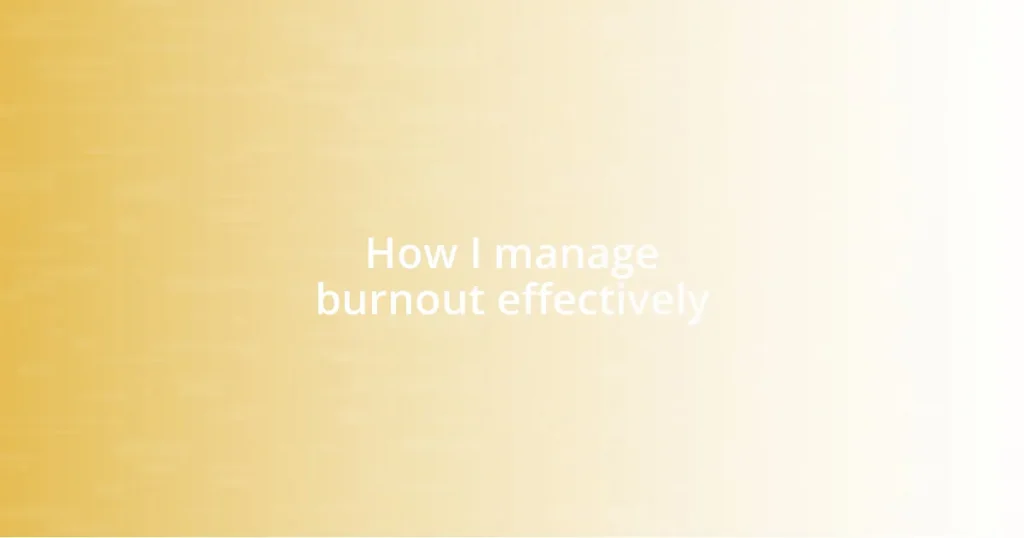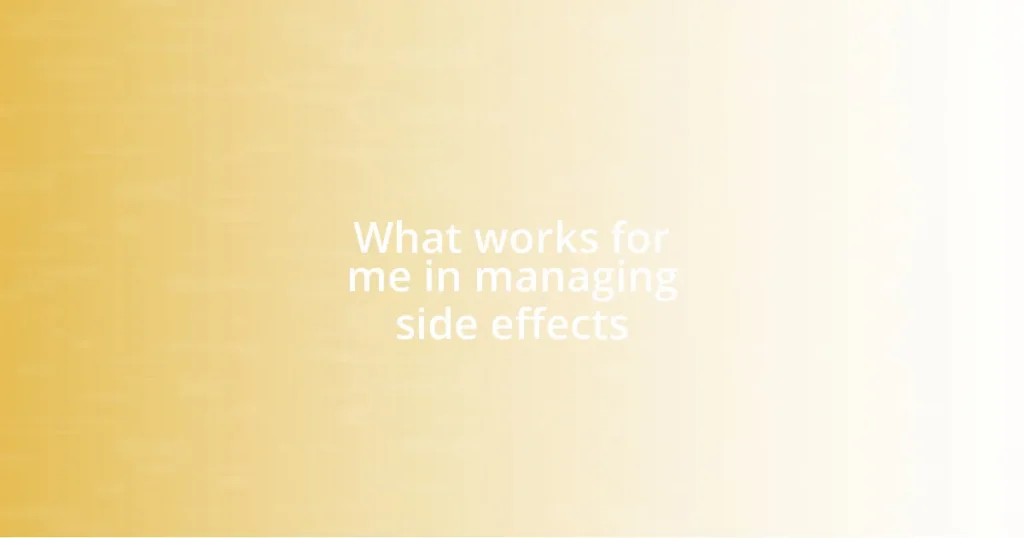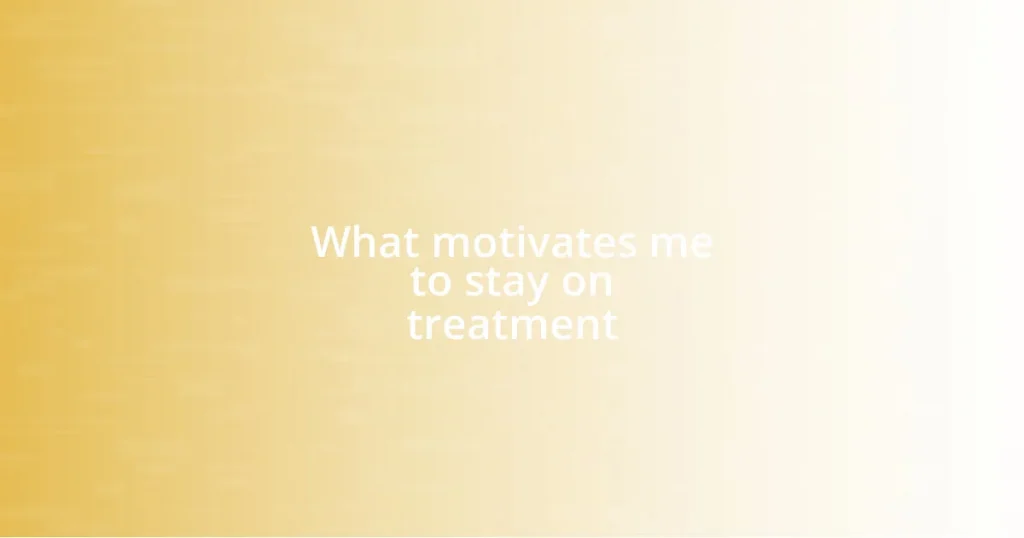Key takeaways:
- Burnout symptoms can include emotional detachment, irritability, and physical issues like headaches; recognizing these signs is crucial to addressing them.
- Identifying personal triggers, such as workload and boundaries, helps manage burnout effectively and prevents it from escalating.
- Creating a structured recovery plan with daily, weekly, and monthly goals fosters accountability and can significantly improve well-being.
- Incorporating self-care routines and seeking professional support are essential steps toward recovery and maintaining long-term wellness.

Understanding burnout symptoms
Burnout sneaks up on you, often masked as mere fatigue or stress. I remember a time when I felt constantly drained, but I convinced myself that it was just the hustle of everyday life. Looking back, I realize that the irritability and emotional exhaustion I experienced were key symptoms I chose to overlook—how often do we dismiss our own feelings, thinking they’ll just fade away?
One of the most telling signs of burnout is a sense of detachment. I vividly recall sitting at my desk, surrounded by colleagues, yet feeling completely isolated. It’s unsettling to be in a room full of people but feel as though you’re on a different wavelength. Have you ever felt that way? It’s crucial to recognize this emotional distance, as it can signal the need for a change before you spiral further into burnout.
Physical symptoms can also manifest, such as headaches or frequent illnesses. I used to brush off those niggling headaches as nothing more than tension. However, these bodily signals were my mind’s way of crying out for relief. Listening closely to what your body tells you can be a game changer in addressing burnout effectively.

Identifying personal triggers
Recognizing our personal triggers is vital for managing burnout. For me, long hours without breaks used to be a major red flag. I often ignored the creeping fatigue that piled up like paperwork on my desk, thinking it was just part of being dedicated. However, when I started paying attention, I realized that skipping lunch or working late severely impacted my mood and energy levels. It’s astonishing how minor habits can quietly build up to a breaking point.
To help pinpoint your triggers, consider these factors:
- Workload: Are you consistently taking on more than you can handle?
- Work Environment: Are there specific colleagues or situations that drain your energy?
- Personal Life: Is your home life contributing stress that seeps into work?
- Health Habits: Are you neglecting sleep, exercise, or nutrition?
- Boundaries: Do you often find it hard to say no or step away from work after hours?
Identifying these triggers can be quite insightful, almost like peeling back layers of an onion. Each layer reveals something about what personally affects you.

Creating a practical recovery plan
Creating a practical recovery plan is essential for effectively managing burnout. I once found myself feeling completely lost, so I decided to sketch out a plan for recovery. It involved small, actionable steps like setting standard work hours, scheduling regular breaks, and rediscovering hobbies I loved, like painting. Incorporating these elements not only rejuvenated my energy but also helped me reconnect with myself, reminding me that recovery takes time and patience.
When developing your recovery plan, it’s helpful to use a structured approach. I recommend breaking your plan down into daily, weekly, and monthly goals. For instance, each day, I aim to do something that brings me joy, even if it’s just a walk in nature. Weekly, I check in on my workload and see if I’m overextending myself. Finally, at the end of the month, I take a moment to reflect on my progress. This balance has been key for maintaining my well-being.
Don’t overlook the power of support. During my recovery process, I reached out to friends who offered encouragement and shared their own experiences. Including a support system in your plan can make a world of difference. Whether it’s talking things out with a trusted friend or seeking professional help, this connection fosters accountability and understanding as you navigate your path back to balance.
| Timeframe | Activities |
|---|---|
| Daily | Engage in a joyful activity (e.g., walk, read) |
| Weekly | Evaluate workload and stress levels |
| Monthly | Reflect on progress and adapt the plan |

Establishing healthy boundaries
Establishing healthy boundaries is an essential step in combating burnout. I remember when I was always the one who volunteered for extra projects, thinking it would show my commitment. But I started feeling overwhelmed and unappreciated, which only fueled my stress. I’ve learned that saying “no” isn’t an admission of failure; rather, it’s a commitment to my well-being. How often do we neglect the importance of our own needs in a quest for validation?
Creating boundaries also means understanding when I need to disconnect. I once had a habit of checking emails late into the night, convincing myself that it would help me stay ahead. But instead, it eroded my personal time and left me feeling drained. By setting clear work hours and stick to them, I’ve discovered a significant lift in both my mood and productivity. It’s incredible how having that separation can help replenish my energy.
Moreover, I’ve found that communicating these boundaries with others is equally important. I once experienced a misunderstanding with a colleague regarding my availability, and that led to unnecessary stress. Openly expressing my limits helps foster respect and mutual understanding. How might your relationships improve if you shared your boundaries openly? I can assure you that the clarity it brings can work wonders, allowing everyone involved to operate more harmoniously.

Incorporating self-care routines
Incorporating self-care routines into my daily life has been transformative. Initially, I treated self-care as a luxury rather than a necessity, but I quickly learned it’s crucial for managing burnout. For example, I scheduled time for meditation every morning. It wasn’t easy at first, but that quiet moment to breathe and center myself became a lifeline, grounding me throughout chaotic days.
One evening, feeling particularly overwhelmed, I decided to implement a “Digital Detox” routine. I put away my devices for a couple of hours before bed and focused on activities that felt rejuvenating—reading, journaling, or simply sipping herbal tea. This shift dramatically improved my sleep quality, and I wondered: how many of us overlook the simple act of disconnecting to truly reconnect with ourselves? It’s a powerful change that creates room for reflection and reduces stress.
I also realized the importance of infusing joy into routine tasks. I began turning mundane chores into mini self-care sessions. For instance, I play my favorite music while cooking, transforming meal prep into a dancing session in my kitchen. This simple act lifts my spirits and reminds me that self-care doesn’t always require grand gestures; sometimes, it’s about adding a splash of joy into the everyday. Have you found ways to weave happiness into your daily chores? Trust me, it makes a world of difference.

Seeking professional support
Seeking professional support can feel daunting, but it’s a powerful step toward recovery. I remember the first time I reached out to a therapist; I wasn’t sure what to expect. What surprised me was how quickly I felt heard and understood. It was as if I had been carrying a heavy backpack for years, and finally someone helped me take it off. Have you ever wished for a space where you could just let it all out?
Working with a professional provided me with tools that I didn’t know I was missing. Cognitive behavioral therapy, for instance, helped me identify negative thought patterns that were fueling my burnout. I used to think, “I have to do it all,” but my therapist guided me to reframe that thought to, “I can prioritize what truly matters.” This subtle shift made a huge difference in my daily outlook. How often do we get stuck in the same loop without realizing it?
Moreover, the emotional support from a professional made me feel less alone. There were times I would share my feelings of overwhelm and anxiety, and it was a relief to find that others had similar experiences. This connection not only validated my struggles but also encouraged me to work through them. Just think: what if seeking support could help you break free from that isolating feeling of burnout? Trusting a professional is an investment in your well-being that can yield profound changes in your life.

Maintaining long-term wellness
Maintaining long-term wellness is a journey I’ve come to appreciate deeply. One of my pivotal moves was establishing a consistent exercise routine. Initially, I resisted the idea, thinking I just didn’t have the time. But I soon discovered that committing to a daily walk not only invigorated my body but also cleared my mind. Have you ever noticed how even a short burst of movement can shift your mood? It’s remarkable.
When it comes to nutrition, I’ve learned to listen to my body. I used to indulge in quick, unhealthy snacks during hectic workdays, which only led to fatigue. Now, I make a point to prep my meals on the weekends, incorporating colorful fruits and vegetables that fuel my energy levels. There’s something rewarding about knowing I’ve made choices that nourish me. How can simple changes in our diet have such a profound impact? I still marvel at how much better I feel with these mindful choices.
Lastly, I’ve embraced the power of community. Surrounding myself with positive, like-minded individuals has been key. Regular check-ins with friends who uplift and inspire me create a supportive environment that is crucial for my long-term wellness. Allocating time for these connections is as vital as any self-care tip. Have you considered how the company you keep influences your well-being? It’s a reminder that investing in relationships can be just as fulfilling as investing in ourselves.















